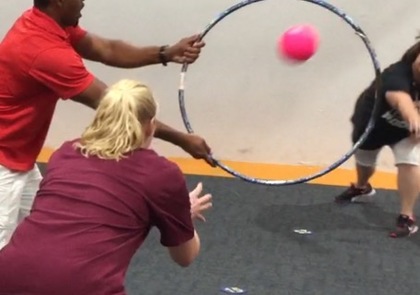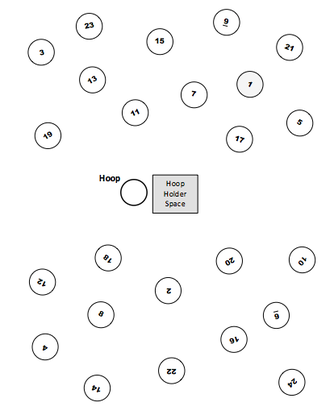| 8-keypadexpress_042216.pdf |
- The roles in this activity include a timer, a hoop-holder, throwers, and catchers. Players can take on some multiple roles, for example, the timer can also be a tosser or catcher, and catchers can be throwers. Exception: The hoop-holder cannot catch or toss the object (but this person could be the timer - tricky, but possible).
- THE THROWING RULE: All throws must be made from the appropriate number in the sequence while the thrower is standing ON the number..
- THE CATCHING RULE: Catchers do not have to be standing on a number.
- THE HOOP-HOLDER RULE: The hoop-holder must be standing on/in the designated center spot at all times while holding the hoop. The holder can move about on/in this area moving the hoop to where it needs to be, but must have both feet on/in this area when the object goes through the hoop from one side to another (see below).
- When throws are made from one side to another (odd to even, or even to odd), the object must go through the hoop. If the object does not make it through the hoop it goes back to the thrower (standing on the appropriate number) for another attempt. Throws are made from the same number until the object goes through the hoop.
- The object starts in the hand(s) of one person standing on the number 1 spot.
- Time starts when the timer says "GO!" When one player has the object in hand and is standing on the highest number in the game (after the object has been thrown through the sequence of numbers in order), the time stops.
Also noted above, if you have multiple teams participating in some respectful friendly competition, use Thread the Needle as an event. In a 25-minute window have teams plan and practice (after the directions are shared) for five minutes and then give them the next 15 minutes to achieve their best time. I like to chart all times on a white board or flip chart paper so the data is available for everyone to see. I circle the best times for all teams and then assign places.
All the best,
Chris Cavert, Ed.D.








 RSS Feed
RSS Feed